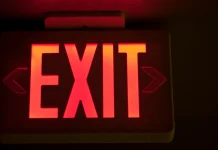One potential problem is that anyone can change these maps and put in incorrect information, and OpenStreetMap relies on other contributors and volunteers to catch inaccuracies and correct them. Other apps using crowdsourced information, such as MapInHood, would have to contend with the same issue.
These apps show enormous promise, but some are cautious. Roland Allen, a cane travel instructor at the Louisiana Center for the Blind, has downloaded a few of them, but doesn’t believe that they will ever fully replace his cane. He’s wary of solely relying on phone technology, which is expensive, can come with glitches, and could leave someone stranded if their battery dies.
“My personal belief is that the technology is something you use only if you can’t do it independently first,” he said.
However, he said that as long as apps were affordable and provided something he couldn’t already do with canes or guide dogs, he was in full support of developing these new technologies. He also added they must be compatible with other tools blind people use. This means they should be relatively hands-free and should deliver information effectively.
Besides being useful for blind and low vision people, Greg Stilson, the head of global innovation at the American Printing House for the Blind, said that he believes the apps that ultimately succeed will be those that provide additional benefits besides accessibility — helping hospitals keep track of equipment or assist warehouses in tracking products, for example — and require very little additional infrastructure (signage, Bluetooth connectivity and the like) to set up.
As technology gets better at recognizing or guiding people through obstacles and pathways, Mr. Stilson said these types of apps could eventually give way to some sort of autonomous pedestrian navigation tool, much like self-driving cars, but for sidewalks.
“That’s potentially the next big frontier,” he said. “Maybe it’s not mapping out the exact space, but maybe it’s helping a blind person navigate in real time.”















